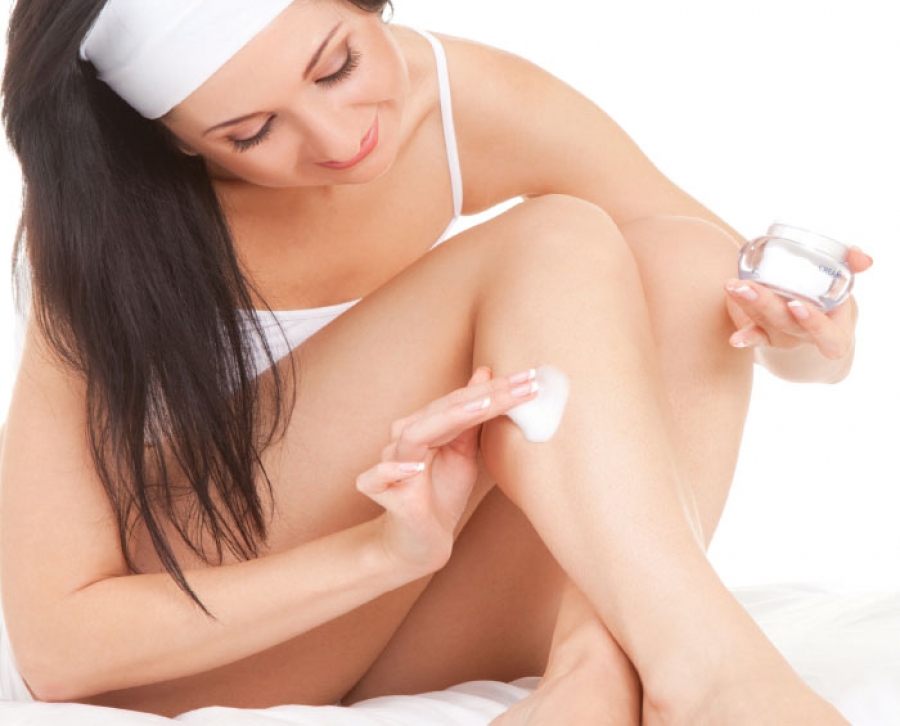Another root cause of skin dryness is a lack of sebum on the skin, which changes its mechanical properties. This change causes the client to perceive that their skin is dry when it technically may not be.
It is critically important for the skin care professional to understand these two important aspects of skin dryness so the proper products and techniques can be used to improve and maintain the condition of the skin.
BARRIER FUNCTION IMPAIRMENT
Barrier function of the skin is one of the most important properties of skin health. A properly functioning barrier will keep toxins and antigens out of the body and retain moisture. This barrier is defined, in part, by the corneocyte and lipid arrangement in the stratum corneum. The better the corneocyte and lipid structure is in the skin, the better the barrier function. As people age, there is a natural loss of the barrier, primarily due to faulty lipid production, poor desquamation of the corneocytes, and new keratinocytes that may not renew as well due to age. Other factors that affect barrier function include: environmental exposure; sun exposure; topical product use of retinoids, BPO, acids, alkalis, and active ingredients; services, such as peels, exfoliating facials, microdermabrasion, IPL, and lasers; and diseases, such as psoriasis, atopic dermatitis, and lupus.
MANAGING IMPAIRED BARRIER FUNCTION
When managing impaired barrier function, it is important to use topical products with hydrating occlusive agents, such as petrolatum and dimethicone; hydrating humectant agents, such as glycerin and hyaluronic acid; active ingredients, such as azealic acid, which stimulates lipid regeneration; and ceramides; peptides; and self-regenerative stem cell actives to strengthen and support epidermal health. It is also beneficial to use products with anti-inflammatories to allow for more rapid healing and sunscreen on a regular basis.
While trying to repair barrier function, avoid using topical exfoliants and cease exfoliating services, such as dermaplaning and microdermabrasion, until the barrier normalizes. It is also beneficial to avoid IPL or laser light therapies; chemical peels; waxing; sun or unusual environmental impacts, such as extreme wind or cold; and topicals with acids or alkalis.
With an impaired barrier, it is useful to continue applying products with lipid replenishment active ingredients, higher levels of occlusive agents, and anti-inflammatories. Do not use aggressive service techniques during this time.
There are phases to barrier repair depending on the severity of the impairment. In extreme cases, there might not be a barrier at all, which can occur from services like ablative laser procedure or from minor weather exposure. In cases where the barrier is greatly impaired, the use of a fine layer of petroleum works well to allow the skin to recreate its normal barrier. In the case of a minor impairment, light moisturization may be all that is needed. In general, higher levels of barrier impairment call for more occlusive ingredients that should be used with anti-inflammatories to allow the skin to calm and heal the barrier. Humectants can then be added to maintain skin balance with a low level of occlusive agents as the skin normalizes.
PERCEPTION OF DRYNESS
The perception of dryness is an important factor in the management of dry skin because non-technical analysis of skin based on the oily-dry-combination skin model is inaccurate. This model was invented for marketing in retail stores quickly to sell product over 50 years ago. Skin care professionals know that the skin can have too much oil or little-to-no oil. Skin can be well hydrated, very dry, oily and dry simultaneously, or both. Skin can even be oily and dry in the exact same spot at the same time. These types are independent properties of skin. All too often, skin analysts use the wrong analysis, which leads to the wrong conclusion and, therefore, the wrong treatment.
As people age, hormone levels in the body fluctuate and change. As a result, many women experience a reduction in sebum expression on their skin. One of the purposes of sebum is to lubricate the skin and keep it supple and flexible. Once sebum levels decrease in the skin, the perception is that the skin is dry because it becomes rigid and the corneocytes are much less flexible and supple, therefore, the skin is harder to move in any direction. When clients state that their skin is dry, the skin professional should understand that that is a possibility that their skin has no oil!
Skin care professionals will have clients claim that they have tried every moisturizer and their skin is still dry. This problem is not due to a lack of moisture, but a lack of oil.
If professionals are treating skin that is dry, they should use the previously described techniques to improve barrier function. When treating skin with low-to-no oil on it, the solution is simple: apply products that contain a class of emollients called esters. These ingredients are not oils, but they do have the initial feel of an oil. They penetrate the skin's stratum corneum easily because they have a similar chemical profile to some lipids in the skin. They essentially replace the sebum loss in the skin.
The reaction of clients that experience sebum supplementation is often remarkable. They will often comment on how their skin finally feels moisturized. Professionals should educate them on the difference, but be also be happy they chose the treatment properly.
In summary, skin care professionals should know the difference between dryness and perceived dryness and treat the client's skin accordingly!
